Tim McPhate | KissFAQ.com
Upon preparing to enter the studio in 1975 to record the follow-up to the successful “Alive!” album, KISS knew the creative ante needed to be upped considerably. KISS wanted to reach a new level, one that would seal their status as larger-than-life superstars. But they would need some assistance to attain their goal.
Enter Bob Ezrin, an erudite producer/musician who was fresh from masterminding Alice’s Cooper’s “Welcome To My Nightmare.” One-part collaborator, one-part musical wizard and one-part drill sergeant, Ezrin’s songwriting input, sharp arrangements and studio prowess helped transform rough gems such as “Detroit Rock City,” “God Of Thunder,” “Shout It Out Loud,” and “Beth” into shining diamonds.
Though initial reviews were mixed after the album’s release, after KISS appeared on the “Paul Lynde Halloween Special” and “Beth” shot into the Top 10 in late 1976, “Destroyer” had surpassed platinum sales. Peter Criss, Ace Frehley, Gene Simmons, and Paul Stanley had reached a new level, one they would elevate throughout the remainder of the ’70s.
More than 36 years later, the double-platinum “Destroyer” still stands as a classic benchmark in the KISS catalog. However, technological limitations and lingering sonic deficiencies had always irked Ezrin. True to his storied reputation, it’s fitting that Ezrin got the proverbial ball rolling on “Destroyer: Resurrected,” a project that saw him remix the entire album with the aid of the “magic of modern technology.”
With the rebooted album now confirmed for an Aug. 21 release, KissFAQ has your exclusive first preview of the resurrection of “Destroyer” and reflections on the making of the album that was, straight from the legendary producer himself.

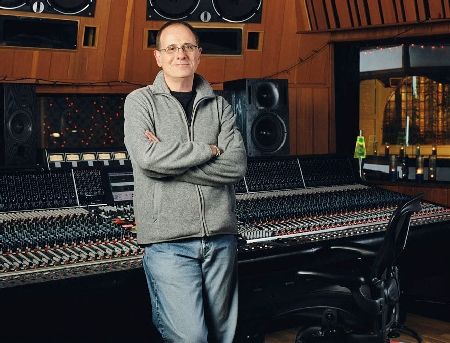
KissFAQ: Greetings, Bob. Let’s get right to it. How did “Destroyer: Resurrected” get off the ground?
Bob Ezrin: I started the project. I basically wrote Gene and Paul and said, “What are we doing for [“Destroyer'”s] 35th anniversary?” And there was a sort of collective blank stare. I said, “Why don’t I remix it? And let’s bring the album up to modern standards, sonically, and also look to see if there’s anything new we can discover in the vaults.”
Everyone thought it was a really cool idea. So we got to work and the folks at Universal, as well as the KISS guys, were digging around in their vaults and archives. It was hard at first to find the original multitracks for the album. But finally they were located and once we knew we had them, then we got to work. It was so much fun to do, I cannot tell you, Tim.
KF: Can you tell us about the contents on this new edition?
BE: In terms of what they’ve put into the final package, I honestly don’t know. I just did the remix, and I did write the liner notes for the package.
KF: Understood.
Bob, the late Sean Delaney, who remixed songs for KISS’ 1978 compilation, “Double Platinum,” once remarked: “He’s probably one of the most amazing producers in my lifetime … because I produced ‘Double Platinum’ with Mike Stone and we had to remix all of the tracks and Bob records with all of the special effects and everything on the tape. You cannot change anything Bob Ezrin has ever done — there it is, like it or not.”
So, how does Bob Ezrin go about remixing Bob Ezrin?
BE: (laughs) That’s a great question.
The fact is we did this on 16 tracks back in those days. And we were a little bit limited because we had to commit sounds to tape. We had to put all of our effects on at the same time that we did the original tracking, and so on. There were things I would have liked to have been able to do at the time, certainly after living with it for a few years. There were some things that still made me cringe because I wish I’d had a little more control. Sixteen tracks was … 16 tracks is very limiting.
So what was great for me was to dig into the 16 tracks and, with the magic of modern technology, I was able to separate stuff out and deal with individual elements within these tracks and really work on making them sound great, in and of themselves. What I was trying to do was to get it to be a little more present, defined and slightly more modern sounding. Not quite as wet as it was originally, but without sacrificing any of the integrity of any of the parts. And I was very faithful to my original mixes. I kept flipping back and forth to make sure I wasn’t losing anything and that I was still retaining the balances that I had before. But I was really trying to augment things, and in having a little more control I was able to bring some things out of the original 16 tracks that I didn’t have the technology to do back then.
I think the end result is the same “Destroyer,” but it’s a little more in your face and it’s a little more sonically powerful. And I think it stands up to modern records, acoustically.


KF: How long did the remixing process take?
BE: It was a period of a few weeks. It took quite awhile to get the material organized and into shape. From when we found the tapes until when they were actually remixed was probably a period of about three weeks. It was longer than I had to do the original album.
KF: You mentioned there were some things you’ve always wanted to sonically address. Can you name an example?
BE: There were snare drum sounds that I wished I could have extracted from the 16 tracks. But they were mixed into the drums because I didn’t have enough tracks. On the drum tracks that I had, I wished that I had a dry snare that was slightly more present, but it already had been mixed in with all the reverb.
Now with modern technology, I was able to isolate the snare hits, dry them up, and bring them forward. And I was able to EQ them separately and compress them separately so I could make them more present, and less buried in echo as they were in the original mix. And there were some vocal sounds that I thought could have been slightly more present, and I thought there were some things that were a little bit dull sounding, but that was the nature of the technology at the time. And [we recorded] on tape. And tape would get dull over time as you played it over and over again. And we had limitations on tape with the amount of top or bottom end, where as digitally those limitations don’t exist.
KF: In listening back to the album throughout the remixing process, can you share any new things you discovered?
BE: I did find an old Ace solo that we hadn’t used.
KF: Really, what song?
BE: Name the song titles for me, quick!
KF: “Flaming Youth,” “King Of The Night Time World,” “Sweet Pain” …

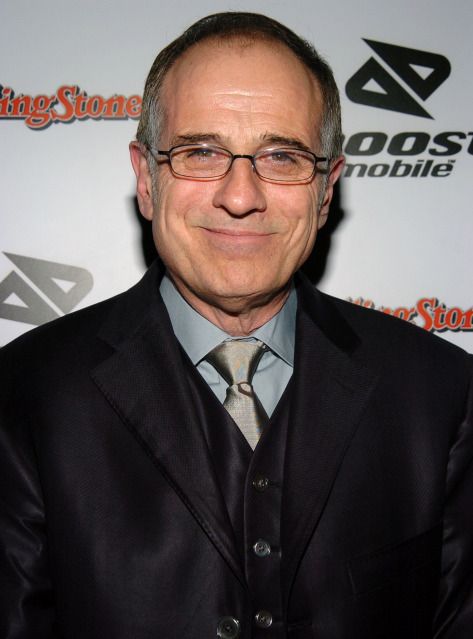
BE: It’s “Sweet Pain.” (Sings the main riff over the solo section) It’s over that section. I found this old Ace solo and I just loved it! I thought it was amazing. So I put that in instead. That’s different.[Ed: This version of “Sweet Pain” will be a bonus track on “Destroyer: Resurrected.”]
And then there were elements of “Beth.” For example, there were certain things that I had taken out of “Beth” in the mix on the original album because at the time maybe I felt like it was too much. But as I listened to it now, I sort of felt they were interesting and kind of enchanting. There was some stuff Peter did — that little “Ah ooh” at the end. It actually occurred twice on the master tape and I only used one of them. And so I put the second one back in — you know, little things like that, little surprises.
Also, I got to correct … there is one lyric on the album, and this is a challenge for KISS fans everywhere. This is the big quiz.
KF: Fire away.
BE: There is one lyric on the album, one line in one song where we say something terribly wrong. And I got a chance, again through technology, to correct the word without anyone re-singing it. The line was terribly wrong, and it was so wrong that what we did was, on the lyric sheet that we put with the album, we actually changed the line from what was sung, to try to make sense of it. And I don’t think we did a terribly good job of it.
So I got to fix something that had been bugging me for many years!
KF: We’ll see if the fans can solve this one.
Bob, back to “Sweet Pain.” Are you saying, on this remixed album, there is a new “old” Ace solo on this song?
BE: Yes.
KF: Very cool.
That segues into one of my questions. The original “Sweet Pain” is perhaps the first known instance in which a KISS member was replaced on a studio album, with Dick Wagner playing on the track instead of Ace. To your recollection, was Ace really not available? Did you have Wagner in mind as your go-to guy from the outset?
BE: In terms of the Dick Wagner connection, I happened to have produced Dick’s band. He actually lived in New York, near the Record Plant. Often when I had an idea for a lead guitar, I would call him and he’d come over and do it. On that particular day, my recollection is that Ace was not around and I had this idea.
KF: Bob, you wouldn’t believe what rumors float around the KISS fan community. One rumor has it that Peter Criss is not the only drummer on “Destroyer.” Any truth to this?
BE: No. In fact, I think Peter played great on “Destroyer.” There’s nobody but Peter on there. And he worked really, really hard. Let me tell you, I worked his ass off. I worked that poor guy so hard, and he deserves all the credit for it because he played it.
KF: Staying with Peter, toward the end of “Beth” there is a brief acoustic guitar part. Did you try recording a pure acoustic version before bringing in the full orchestra?
BE: No. “Beth” was born on piano, and my vision for “Beth” was born in my living room on my piano. That’s me on piano [on the recording]. I always had it in my mind that it was a piano piece. There is more acoustic guitar on the track, actually now that you’re mentioning it. There’s more of it in my new mix.
KF: So there was more acoustic guitar originally?
BE: There was an overdubbed acoustic guitar throughout the song. And at the end of the day I only used it at the very end in the original. I put some of that back into this new mix because I thought it added a nice color.
KF: I can’t wait to hear it.
BE: It’s nice and I think the orchestra sounds really good on the new mix, too. It gave me an opportunity to do a little bit of rebalancing of the orchestra, which I really appreciated because on the original there were a couple of key lines that weren’t featured as much as I originally intended. So with this opportunity to get back in there and separate things out, I was able to do that. It sounds really cool.
KF: There’s been lots of talk over the years with fans in terms of “what if ‘Beth’ didn’t take off?” From your perspective, have you given thought to what would have happened to “Destroyer” and the band if “Beth” didn’t become a hit single?
BE: No. (laughs)
“Beth” wasn’t an afterthought. It’s a great song, and was part of the record. But there were other songs on that record that I felt were really important songs. And thank God “Beth” got noticed, but I thought “Detroit Rock City” was a very important song. Over the years, it’s become even more important to KISS fans.

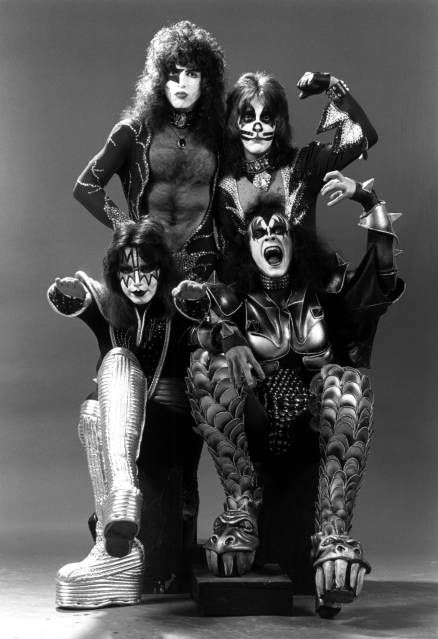
KF: In my opinion, “Detroit Rock City” is perhaps KISS’ finest recorded studio song. And the lead break just may be the most memorable guitar melody in the KISS catalog. Had Ace attempted a solo for the song in the studio, or was that a part you envisioned right away?
BE: No, we built that song from the ground floor up, and as soon as we got to that section, I knew. I heard that solo. (Sings the melody) I just knew it. It’s not terribly original.
KF: It sounds classically influenced.
BE: It’s very classical [sounding]. But it just so suited that, and with that great drum beat underneath, I just knew that’s what we needed to do. And I’m very thankful that Ace was willing to do that and there’s that great harmony part on it. It was really cool.
KF: In listening to the demo, Paul seemed to have a rough sketch of he song but it certainly went through a transformation. The lyrics were reshaped, the arrangement was tightened and the parts were refined.
BE: That track was very arranged. Even though when you listen to the record you don’t think of it as hugely arranged, you think of it as being spontaneous. That’s the best thing about that song, that you don’t feel the arranging.
KF: One more question on “Detroit Rock City,” and I almost hate to ask this. But there is debate to this day regarding the song’s introduction. Some believe it’s Gene who does the news narration. That’s you, correct?
BE: That’s me, yes.
KF: Is there any effect on your voice?
BE: Well, we EQ’d it and compressed it so it would sound like it was being played back through a speaker. It was not only my voice but I was also in the bathroom doing dishes. So I was in the bathroom doing the dishes while we played that voice through a speaker.
KF: It’s just the perfect complement to that song.
BE: It worked out pretty well.

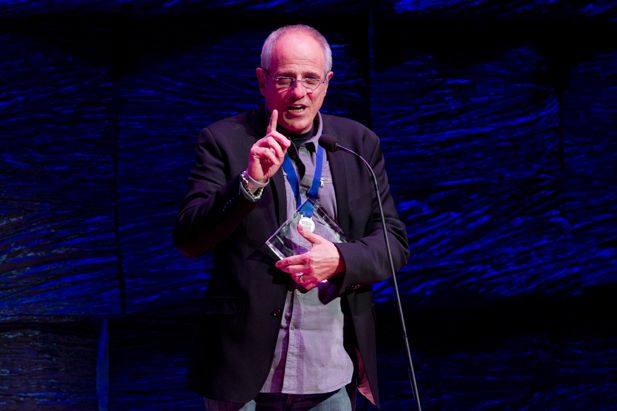
KF: What about the tasty melodic solo in “King Of The Night Time World”? That seems very thought out. Who wrote that part?
BE: (pauses) It’s kind of Allman Brothers-esque. Honestly, I don’t remember who [came up with it].
KF: With “God Of Thunder,” do you recall how much persuading it took to talk Paul into handing the song over to Gene?
BE: I don’t think it took much persuading. It was pretty clear that the song was much more suited for Gene’s character than Paul’s more romantic character. I think the album was very balanced. I don’t recall there being any argument over it.
KF: I’ve read that Paul has said he was surprised in the sense, “What? You’re taking my song and giving it to him?”
BE: I don’t remember that happening.
KF: What about the tempo? Compared to Paul’s demo, the tempo on the album version was brought down considerably.
BE: Oh yes. I was very much into the arranging and trying to break the guys out of the sort of straight-ahead up-tempo rock that they were doing before and add more colors. So it was important to change up tempos, change up keys, change up time signatures, and just experiment with the sound of things by adding production elements they hadn’t used before.
KF: Back to acoustic guitar — there is some acoustic guitar featured on “Dressed To Kill,” the studio album prior to “Destroyer.” And of course, “Beth” and “Great Expectations” feature acoustic guitar. Was it possible that Paul or Ace had a go at the acoustic parts?
BE: Interesting. It’s possible that it was Wagner. I’m sure [Paul or Ace] played some acoustic on the record, but I don’t remember specifically.
KF: In addition to the “Sweet Pain” lost solo, were there any other similar parts unearthed from the “cutting room floor”?
BE: No. There were very few things that we didn’t use. We essentially recorded what we needed. And when a song was done, that was that. Apparently, they’ve unearthed some stuff that they didn’t complete or didn’t use as part of the package.
KF: Here’s a song title for you: “Ain’t None Of Your Business.” What do you remember about this one?
BE: Lots of people talk about that song, and I vaguely remember it.
KF: This was an outside song I believe you brought in early on for consideration, and Peter ended up singing a demo.
BE: I honestly don’t remember that. But I do know that we didn’t have all of the songs for the album all written in one batch. We didn’t record the album all in one batch. We recorded half of it and then we stopped.
KF That’s right.
BE: They were in a dispute with Casablanca. And then we finished some months later, and finished writing some months later. So it may have been at the very beginning that I didn’t hear enough material and I was trying to bring some ideas in.
But once we got into the process and the album started to take shape, in our heads it was clear that the tune would have been too straight ahead. This whole album was far more based on character.
KF: Do you recall if the bulk of the songs were written during the first sessions, prior to the label dispute, or later?
BE: I vaguely, vaguely remember it being almost equal, that was there literally half that was done and then we had to stop.
KF: On the subject of adding colors, where did you pick up the technique of tucking a piano underneath power chords?
BE: I don’t remember if I was the originator of that. I don’t even remember where it came from except I’m a piano player and I was looking for a texture to augment the guitars. I was looking to beef things up instead of going for the obvious extra electric guitar or another instrument. I knew that the piano had the sound I was looking for. And it’s the same thing with any of the other additional instruments on the record. I knew I was looking for additional colors.

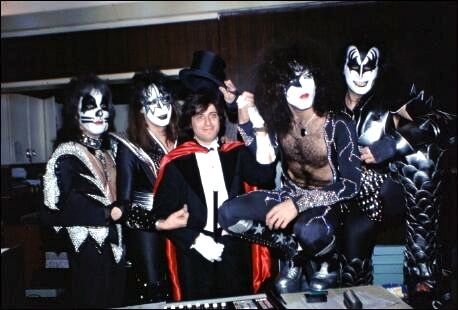
KF: Such as the harpsichord on “God Of Thunder” and, of course, the calliope on “Flaming Youth.”
BE: Oh yeah.
We had the best time doing that kind of stuff. We knew everything that we were doing was completely different from the “15-year-old pimpled boy” version of KISS. That was the whole idea behind this record, to get away from that and get to a more universally attractive KISS. To bring in the girls, to bring in more intellectual listeners, to bring in more pop music-oriented listeners — there’s a lot of all of that stuff on the record. And you know, there’s still the “cock and balls.”
But things like using a calliope — that was kind of a nod to the Beatles.
KF: Absolutely.
While time has shown “Destroyer” to certainly be a classic KISS album, it’s interesting that initial reviews were mixed in terms of critic and fan response — some really didn’t know what to make of it. I know this is a potentially sensitive topic since he’s no longer with us, but I’ve read that Bill Aucoin sent a letter to you after the album was released, essentially saying he was disappointed that you didn’t capture “the KISS sound.” What do you remember about this?
BE: (pauses) Well, it is kind of tough to talk about it since he’s no longer with us.
But basically he was reacting to the press. And he also had his sense of what KISS ought to be — he was very much into the “15-year-old boy” version of the band. That was what had gotten them as far as they had gotten, which was pretty far from the little rehearsal studio he first saw them in. He was afraid of change, afraid of stretching out the way we had stretched out on the album. I think more than anything he was influenced by some of the early reviews — they were really, really negative. One KISS fan actually said that if he ever met me, he’d punch me in the nose on behalf of KISS fans everywhere. (laughs)
So the core of the KISS Army at the time was offended and angry, and particularly angry with me for having taken KISS in a new direction. And I think that because the initial reactions were so negative Aucoin basically decided the album was a failure, that it was probably not going to do anything and it was my fault. So he sent a letter that basically said that he was disappointed that I failed to capture “the KISS sound” and that they would begin to look elsewhere for a producer.
In fact, I was away on vacation and he called Jack Douglas, who was working for me. I had just recently let him out of his deal — and let him and Aerosmith out of the deal so they could go their own way because I felt that it was unfair for me to hang on to either of them [because] they were doing so well together. So he was out on his own and then he got a call from Aucoin asking if he would be interested in producing KISS.
I had been on vacation and I came back and there were 25 messages from Jack Douglas on my answering service. There were no machines at the time. I had some nice little old ladies in New York who were writing down messages for me. I got back, and one of the ladies said, (mimics New York accent) “Who’s Jack Douglas?” I said, “Why?” And she goes, (mimics New York accent) “Well, he left you a million messages — you better call him.”
I thought the album was amazing … let’s just say that’s the reason why I didn’t do the next album.
KF: Speaking of which, Eddie Kramer, who would work with the band on the next two studio albums, “Rock And Roll Over” and “Love Gun,” once said that, and I’m paraphrasing, “‘Destroyer’s a good record for a couple of tracks, but it really didn’t sound like KISS.”
Bob, what do you think of KISS’ work with Eddie Kramer and was it more KISS sounding?
BE: Well, I think over the years what KISS have proven is that there’s no such thing as “KISS sounding.” They’re an incredibly versatile group. There is a KISS attitude and a KISS style of lyric writing since there are characters [in the band].
But musically, they experimented more than of ton of other groups. So I think, at the time, Eddie was saying what some of the KISS fans were thinking, which was, “This isn’t KISS.” When in actuality the definition of the evolution of KISS went from being sort of a one-trick pony into actually being who they were. These guys were heavily influenced by the Beatles and other bands of the ’60s. Their tastes were fairly wide-ranging. The kind of stuff that we wrote [on “Destroyer”] went all the way from pop to R&B. They just couldn’t find a way to make it work in the context of a KISS album until we got to “Destroyer.” And I think “Destroyer” holds up. I think it plays like a work of theater. You can imagine these costumed stage “monsters” prancing around and singing all this stuff. Even the softer stuff.
So I disagree with Eddie’s characterization. But I wonder what he would say today.
KF: We talked about Peter before, but is there another band member who you think really shined on “Destroyer”?
BE: Every one of ’em. Every one of them were punching above their weight class on “Destroyer.” This was really a huge leap forward for all of them.
Gene’s bass playing was so impressive on “Destroyer”; it was really reaching beyond what he had ever played before. And he practiced and practiced. And Ace’s guitar playing was so much more controlled and lyrical. And Paul’s [guitar playing] too — you know, I think Paul always had a lyrical style, he just didn’t have as much of an outlet in some of the older stuff. Paul’s vocals — I think he grew up as a singer at the moment we were doing “Destroyer.” He really became even more controlled and more versatile, and more conscious about his voice and the way in which he was using it than he had ever before. That sort of set the stage for all of the stuff that came after [“Destroyer”].
So I think each one of them, in their own way, had stepped way beyond — it was certainly not in their comfort zone. But they had fun. And Tim, it was hard, there was a lot of sweating and there was a lot of swearing (laughs). There was some resistance to certain ideas and some things had to be arm wrestled over. But the whole process was very exciting, and lots of fun, and very high energy. We were going all the time, every day, until we finished that record.
KF: Last question. Bob, you’ve produced many classic albums. After revisiting “Destroyer” in such an intimate manner, where does it now sit in your personal discography?
BE: Well, it goes at the top, that’s for sure.
Going through those tapes again was such a joy for me because it brought back all the memories of making the album. But it also reminded me of a method of making music and producing that I used in the ’70s that, over the years as technology got more sophisticated, I sort of slipped out of and I would like to get back to.
I think we did the most we could with the tools that were available at the time. We pushed ourselves to the limit of our musical and creative abilities. And we pushed each other to be at the top of our games through the entire process. I’m very proud of that. This record, it has those elements about it that are kind of unique to any of the other stuff that I had done. I’ve always tried to push myself beyond what I know. But this was kind of a watershed moment for all of us. It was a moment of great discovery. And the good news is that the result of our work has survived and it’s still popular 36 years later. I love that.
(KissFAQ would like to extend sincere thanks to Bob Ezrin. “Destroyer: Resurrected” is due for release on Aug. 21.)
